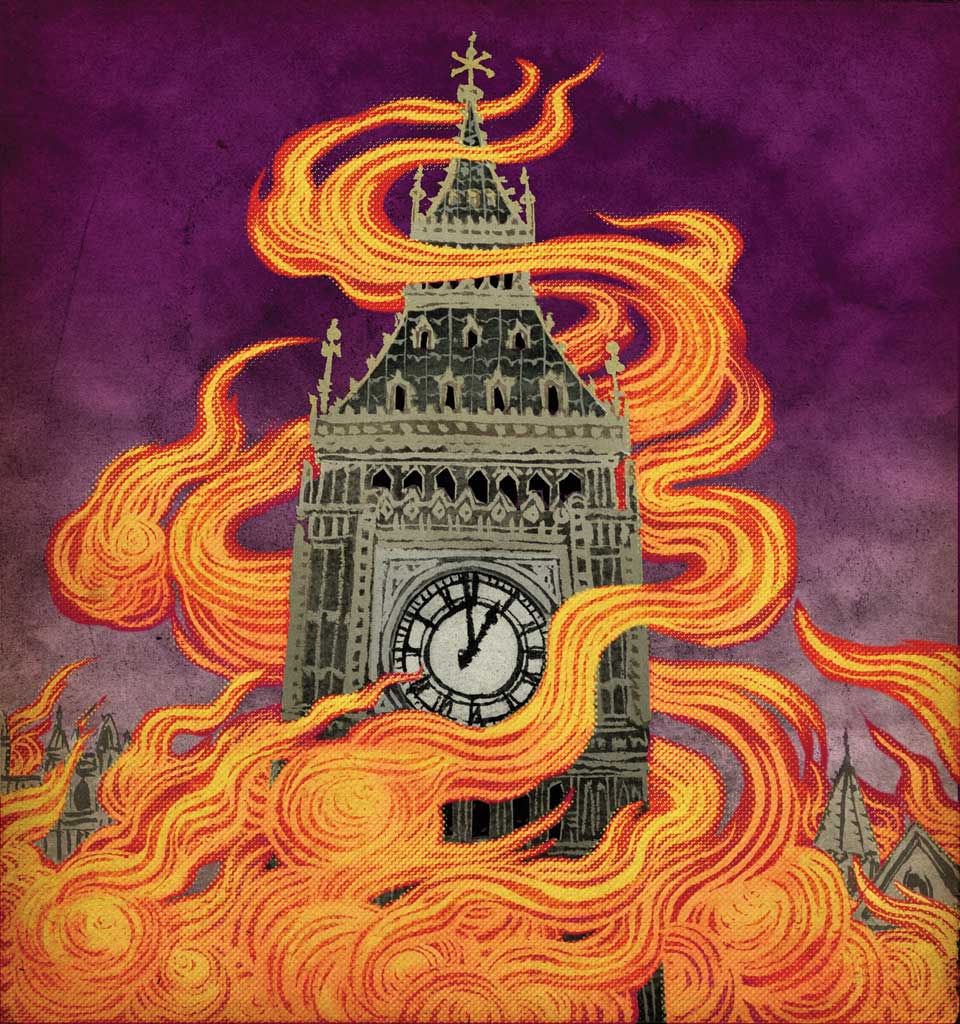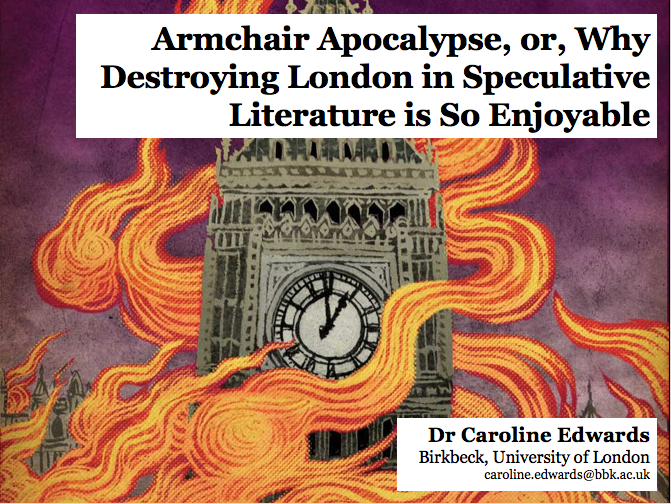LLS Keynote
I was really pleased to be invited to deliver one of the plenary addresses at the London Literary Society's annual conference in July 2017, which was organised around the theme of "Fantastic London: Dream, Speculation and Nightmare" and held at the Institute of English Studies, Senate House, University of London.
My plenary was titled "Armchair Apocalypse, or, Why Destroying London in Speculative Literature is So Enjoyable" and traced the literary corpus of texts in which London is destroyed as a result of apocalyptic catastrophe. Drawing on Brian Aldiss' categeorisation of the "cosy catastrophe," I examined the question of the reader’s participation in what I am terming the experience of armchair apocalypse offered by narratives of London’s destruction. Armchair apocalypse, I suggested, can help us to tease out some provocative questions about genre and readerly expectations, the enjoyment of this kind of sub-genre, and also the political or ethical questions embedded in such narratives – are we simply supposed to enjoy these fictions, or does our enjoyment become complicated in a game of recognition, implication, and, subsequently, of uncomfortable realisation that like the protagonists we, the readers, are similarly responsible for the crises that we’re enjoying reading about so much?
From Mary Shelley's story of global pandemic in The Last Man (1826), to Richard Jefferies' gleeful dismantling of civilisation in a vision of natural futurity in After London, or Wild England (1885), and H. G. Wells' Martian invasion in The War of the Worlds (1898): these early apocalyptic texts use the recognisable topography of London and its suburbs to bring a series of cataslysms to bear upon the reader's own real world environment. But it is M. P. Shiel's last man narrative, The Purple Cloud (1901), which gives us the most striking example of the armchair apocalypse, when the narrator Adam Jeffson reclines in a red-velvet easy chair to watch London burning. With the armchair apocalypse, then, we might identify two textual levels informed by reader response theory and reception criticism: (1) the first level would be the level of the story itself, that is, Jeffson’s subversive pleasure at destroying London, the symbol of progress, civilisation, the acme of Victorian achievement, and so on; (2) but the second level would refer back to our position as readers of Shiel’s novel in which we occupy our own “armchair” subject position, experiencing the confusion of pleasure at reading about the grand melodrama that ends everything. From this standpoint of readerly enjoyment, generic expectation, and irreverent apocalyptic depictions that blend realistic and comedic or satirical modes, I considered the examples of John Wyndham's The Day of the Triffids (1951), Doris Lessing's Memoirs of a Survivor (1974), Emma Tennant's The Time of the Crack (1973) and Will Self's The Book of Dave (2006).
Contemporary literature (from the 1980s to the present day) has produced something of a profusion of apocalyptic narratives that imagine (sometimes gleefully) the destruction of London. Important examples here include Iain Banks, Walking on Glass (1985), Neil Gaiman’s Neverwhere (1996), Michael Moorcock, Mother London (1988) and sequel King of the City (2000), China Miéville’s Gothic urban fantasy King Rat (1998) and his “New Weird” novel Perdido Street Station (2000) set in what he called a “chaos-fucked Victorian London” (2000), Maggie Gee's The Flood (2004), Ben Aaronovitch’s Rivers of London (2011) and Julie Myerson's Then (2011); as well as, more recently, Paul Cornell’s London Falling (2012) and Victoria Schwab’s parallel London universes in A Darker Shade of Magic (2015). Finally, the talk concluded with a brief consideration of the "message" of apocalyptic fictions of the city.
Click here to listen to a recording of the talk:
Below are the PowerPoint slides which accompanied the plenary:








 Dr Caroline Edwards is Senior Lecturer in Modern & Contemporary Literature at Birkbeck, University of London. Her research and teaching specialisms are in 21st century literature and critical theory, science fiction and post-apocalyptic narratives, Marxist aesthetics, and utopianism.
Dr Caroline Edwards is Senior Lecturer in Modern & Contemporary Literature at Birkbeck, University of London. Her research and teaching specialisms are in 21st century literature and critical theory, science fiction and post-apocalyptic narratives, Marxist aesthetics, and utopianism.
Follow / Contact